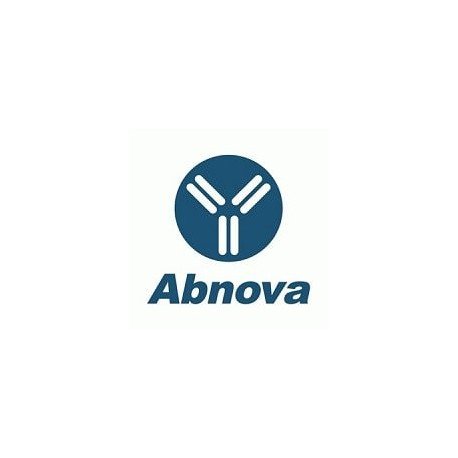Cart 0 Product Products (empty)
No products
To be determined Shipping
0,00 € Total
Prices are tax excluded
Product successfully added to your shopping cart
Quantity
Total
There are 0 items in your cart. There is 1 item in your cart.
Total products (tax excl.)
Total shipping (tax excl.) To be determined
Total (tax excl.)
Data sheet of Asgr1 monoclonal antibody, clone 8D7
| Brand | Abnova |
| Product type | Primary antibodies |
| Reactivity | Human,Rat |
| Host species | Mouse |
| Applications | WB,ELISA,IHC-Fr,Flow Cyt |
More info about Asgr1 monoclonal antibody, clone 8D7
| Brand: | Abnova |
| Reference: | MAB5646 |
| Product name: | Asgr1 monoclonal antibody, clone 8D7 |
| Product description: | Mouse monoclonal antibody raised against native Asgr1. |
| Clone: | 8D7 |
| Isotype: | IgG1 |
| Gene id: | 24210 |
| Gene name: | Asgr1 |
| Gene alias: | ASGR|MGC108731|RATRHL1|RHL1 |
| Gene description: | asialoglycoprotein receptor 1 |
| Immunogen: | Native purified rat liver membrane extracts Asgr1. |
| Form: | Liquid |
| Recommend dilutions: | Recommend dilution at 1:10 The optimal working dilution should be determined by the end user. |
| Storage buffer: | In PBS (0.1% BSA, 0.02% sodium azide) |
| Storage instruction: | Store at 4°C. |
| Note: | This product contains sodium azide: a POISONOUS AND HAZARDOUS SUBSTANCE which should be handled by trained staff only. |
| Product type: | Primary antibodies |
| Host species: | Mouse |
| Antigen species / target species: | Rat |
| Specificity: | The asialoglycoprotein receptor (ASGPR) is a transmembrane glycoprotein (42 KDa) which mediates binding, internalisation and degradation of extracellular glycoproteins that have exposed terminal galactose residues. The receptor is expressed on the surface of the hepatocytes in a polar manner, i.e. it is present on the sinusoidal and lateral plasma membranes but not on the bile canalicular membrane. The mammalian hepatic ASGPR mediates the endocytosis and degradation of serum proteins from which terminal sialic residues have been removed. The rat asialoglycoprotein receptor (ASGPR) consists of three polypeptide subunits: rat hepatic lectin (RHL)-1, RHL-2 and RHL-3. The monoclonal antibody 8D7 recognizes a subunit-specific epitope on RHL-1 of rat ASGPR. The monoclonal antibody 8D7 is cross reactive with human ASGPR. |
| Reactivity: | Human,Rat |
| Applications: | WB,ELISA,IHC-Fr,Flow Cyt |
| Shipping condition: | Blue Ice |
| Publications: | A monoclonal antibody to rat asialoglycoprotein receptor that recognizes an epitope specific to its major subunit.Shimada M, Mizuno M, Uesu T, Nasu J, Okada H, Shimomura H, Yamamoto K, Tsuji T, Shiratori Y. Hepatol Res. 2003 May;26(1):55-60. |


